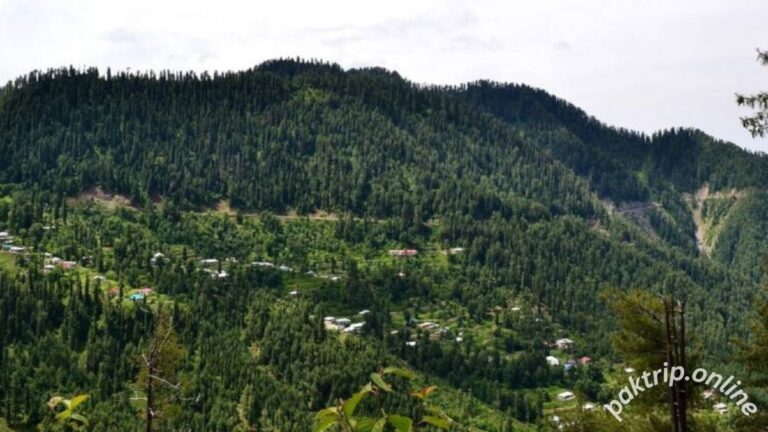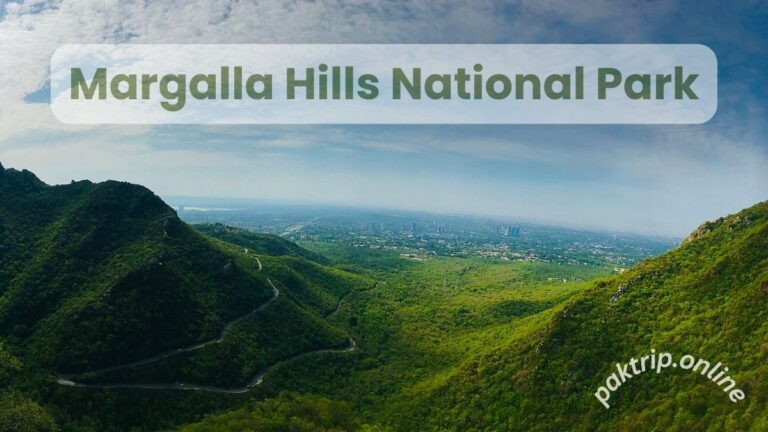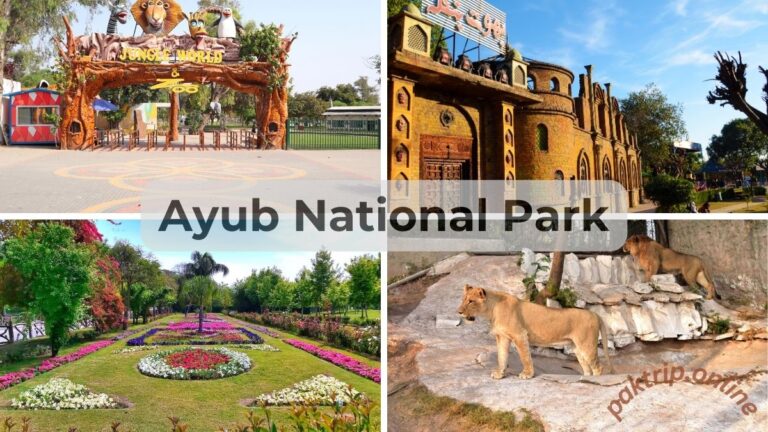Hingol National Park: Pakistan’s Natural and Cultural Wonder
Hingol National Park is Pakistan’s largest national park, an expansive wilderness located along the Makran Coastal Highway in Balochistan. Covering around 6,100 square kilometers, this natural gem is known for its breathtaking rock formations, diverse wildlife, rich cultural history, and geological marvels. Situated approximately 190 kilometers from Karachi, Hingol National Park spans the districts of Gwadar, Lasbela, and Awaran, making it an accessible and captivating destination for nature lovers, adventurers, and researchers.
The Landscape of Hingol National Park
The terrain of Hingol National Park is a fascinating blend of mountains, deserts, river valleys, and coastal shores. This vast and varied landscape includes:
Rock Formations: Hingol is famed for unique geological formations created by centuries of natural erosion. The Princess of Hope, a rock formation resembling a woman gazing into the distance, has become one of the park’s most iconic landmarks. The Balochistan Sphinx, another popular formation, has a striking resemblance to the Egyptian Sphinx, though it’s entirely natural.
Makran Coastal Range: This rugged mountain range creates a striking backdrop to Hingol’s landscape, especially along the coastal areas. These mountains, formed over millions of years, contribute to the dramatic scenery that makes Hingol a unique destination.
Hingol River: Flowing through the heart of the park, the Hingol River enhances the scenery and provides a lifeline for the region’s wildlife. During the monsoon season, the river swells, creating temporary wetlands that support migratory birds and other animals.
Coastal Areas and Mangroves: The park borders the Arabian Sea, with pristine beaches and mangroves supporting marine life and offering habitats for migratory birds. The coast, particularly Kund Malir Beach, is a peaceful escape where visitors can experience the serene beauty of Pakistan’s coastline.
A Rich Cultural History
Hingol National Park is not only a natural wonder but also a place of significant cultural and religious importance. This park has been a center for historical and spiritual connections over centuries.
Hinglaj Mata Temple: Nestled in a cave in the Makran Desert, Hinglaj Mata Temple is one of the most sacred sites for Hindus in Pakistan. Thousands of Hindu pilgrims visit this temple annually, making the journey to Hinglaj Mata as a symbol of faith and devotion. The pilgrimage is steeped in tradition, and the temple is regarded as a sacred place for worship and spiritual reflection.
Ancient Rock Carvings: Throughout Hingol, there are ancient carvings on rocks that give us glimpses of the civilizations that once flourished here. These carvings depict symbols and images that provide valuable insights into the area’s historical and cultural heritage, serving as a “living history book” of early life in Balochistan.
Wildlife and Ecosystem Diversity
Hingol National Park is home to a diverse range of wildlife, including species that are rare and endangered. This national park is a sanctuary for many animals, offering them protection and a stable environment to thrive in a rugged landscape.
Mammals and Reptiles: Hingol supports several species, including the Sindh ibex, Indian wolf, chinkara gazelle, and Balochistan leopard. These animals have adapted to the park’s harsh environment, especially in mountainous and desert regions. The park’s wetlands and riverbanks are also habitats for reptiles like marsh crocodiles and green turtles, which come to the coast for nesting.
Birds: The park is a paradise for birdwatchers, hosting a wide variety of bird species. During migration seasons, flamingos, herons, and egrets can be spotted in the wetlands and coastal areas, while raptors like eagles and hawks soar over the mountains. The diversity of birdlife reflects Hingol’s rich ecosystem, supported by the park’s vast and varied habitats.
Marine Life: The coastal waters near Hingol are home to green and olive turtles, Indo-Pacific dolphins, and other marine life. Hingol’s beaches provide nesting grounds for turtles, although pollution and plastic waste pose challenges to their survival.
Geological and Scenic Attractions
Hingol National Park offers several breathtaking attractions that highlight the park’s unique geological and natural beauty. Here are some unmissable wonders:
Princess of Hope: This iconic rock formation, resembling a woman gazing out at the horizon, stands as a testament to the power of natural erosion. Named by Angelina Jolie during a visit in 2004, it’s one of the most photographed landmarks in Hingol.
Balochistan Sphinx (Lion of Balochistan): Known locally as the Lion of Balochistan, this natural rock formation bears an uncanny resemblance to the famous Sphinx of Egypt. It’s a prime example of the geological formations that make Hingol an enchanting place to explore.
Hinglaj Devi Temple: An essential pilgrimage site for Hindus, this temple nestled in the desert holds great cultural and spiritual importance. The temple draws thousands of devotees annually and symbolizes Pakistan’s religious diversity.
Kund Malir Beach: Kund Malir Beach is a must-visit destination within the park known for its pristine waters and scenic views. Its tranquil setting and crystal-clear waters make it a perfect spot for relaxation and photography.
Mud Volcanoes: Hingol is home to several mud volcanoes, including Chandragupta and Jwalamukhi. These volcanoes release mud and gas from the Earth’s interior and are considered sacred by Hindu pilgrims. With heights ranging from 800 to 1,500 feet, these volcanoes are an incredible natural phenomenon unique to Hingol.
Natural Oases: Dotted throughout Hingol’s desert landscape are small oases, that provide water and sustenance for wildlife. These oases are surrounded by lush vegetation, contrasting with the rugged terrain and supporting various species that rely on these rare water sources.
Protecting Hingol’s Natural and Cultural Heritage
As a region rich in biodiversity and cultural history, Hingol National Park faces challenges related to conservation and sustainable tourism. Conservation efforts are focused on protecting endangered species, preserving cultural sites, and maintaining the integrity of Hingol Park’s ecosystems.
Wildlife Protection: Conservation organizations work with local authorities to prevent illegal hunting, a threat to species like the Sindh ibex and chinkara gazelle. Protecting wildlife is critical to maintaining Hingol’s biodiversity.
Pollution Management: With increased tourism, pollution, particularly plastic waste, has become an issue at sites like Kund Malir Beach. Initiatives are underway to promote eco-friendly tourism and reduce plastic waste to ensure the park’s ecosystems remain healthy.
Education and Awareness: Educating visitors and local communities about the importance of Hingol’s ecosystems and cultural heritage plays a key role in conservation efforts. Programs are being implemented to raise awareness of the park’s environmental and cultural significance.
Tips for an Unforgettable Experience
To make the most of your visit to Hingol National Park, here are a few practical tips:
Plan Your Visit Seasonally: October to March is the best time to visit, as temperatures are mild and ideal for outdoor exploration.
Hire a Guide: An experienced guide can provide valuable insights into the park’s natural and cultural history, enhancing your experience.
Bring Essentials: Hingol’s remote location means limited facilities. Bring water, food, and other supplies, as well as sun protection for the arid climate.
Respect Cultural Sites: Sites like Hinglaj Mata Temple hold cultural and religious significance. Show respect when visiting these areas to honor local traditions.
Conclusion
Hingol National Park is a spectacular blend of natural beauty, cultural history, and ecological diversity. From the stunning rock formations like the Princess of Hope and the Balochistan Sphinx to the serene waters of Kund Malir Beach and the rich spiritual heritage of Hinglaj Mata Temple, this national park offers a truly unique experience. A visit to Hingol Park is more than a journey into nature; it’s a dive into the cultural and geological wonders of Pakistan’s largest national park. Whether you are a nature enthusiast, a photographer, or a seeker of cultural insights, Hingol National Park promises an unforgettable experience in one of Pakistan’s most captivating landscapes.






